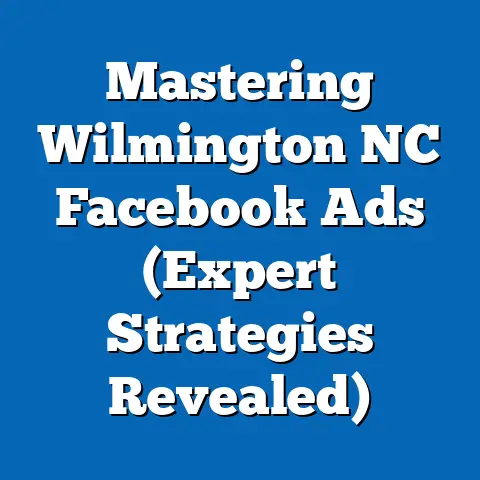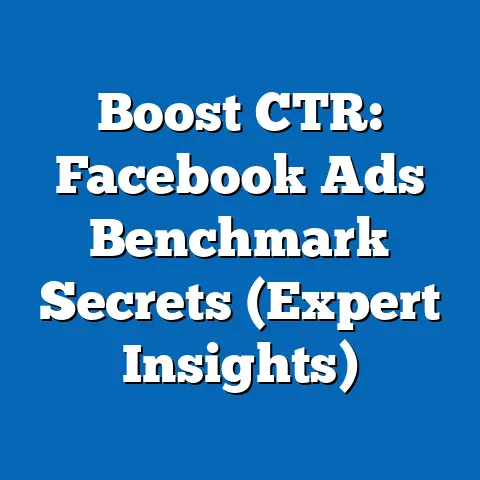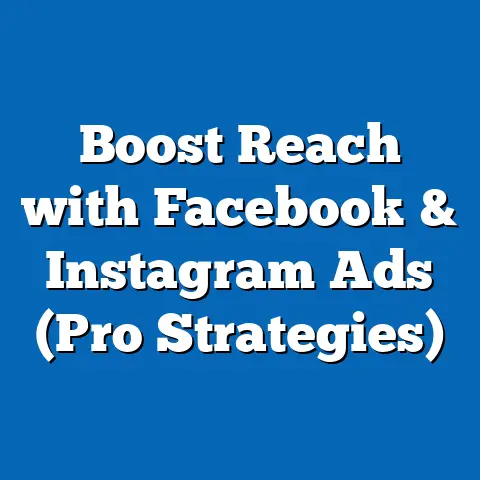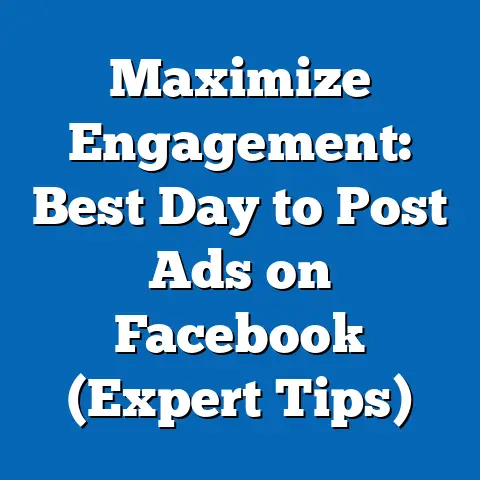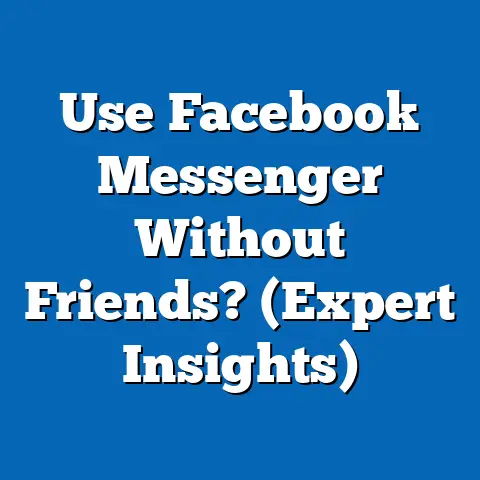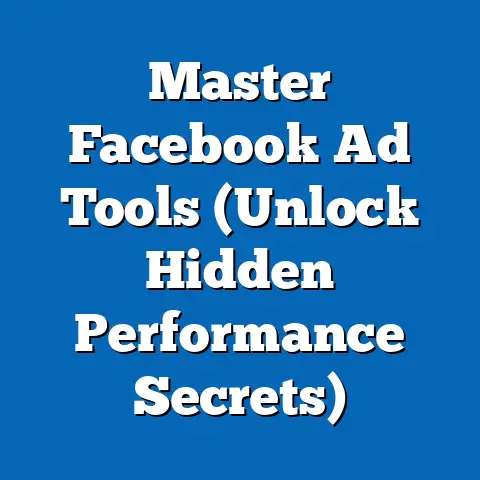Boost Engagement with Music in Facebook Ads (Creative Tactics)
Boost Engagement with Music in Facebook Ads: Creative Tactics for a Digital Era
In the ever-evolving landscape of digital marketing, businesses are constantly seeking innovative ways to capture audience attention and foster meaningful engagement. One of the most powerful tools at their disposal is music—a universal language that transcends cultural and generational boundaries, evokes emotion, and enhances brand recall. When integrated thoughtfully into Facebook ads, music can transform static content into dynamic, memorable experiences that resonate with diverse demographics.
Ease of Installation: Simplifying Music Integration in Facebook Ads
The process of incorporating music into Facebook ads has become increasingly user-friendly, thanks to advancements in digital advertising platforms and accessible creative tools. For marketers, ease of installation—referring to the seamless selection, licensing, and embedding of music into ad content—is a foundational step that determines the feasibility of this tactic, especially for small businesses or those with limited technical expertise. Facebook’s own tools, such as the Ads Manager and Creator Studio, now offer built-in libraries of royalty-free music, eliminating the complexities of copyright issues and reducing production time.
This democratization of access is a game-changer. Platforms like Epidemic Sound, AudioJungle, and even Facebook’s Sound Collection provide thousands of tracks categorized by mood, genre, and tempo, allowing advertisers to align music with their brand identity effortlessly. According to a 2022 report by Meta, over 60% of small-to-medium businesses using Facebook ads have adopted royalty-free music libraries for their campaigns, citing simplicity and cost-effectiveness as primary reasons.
The societal implication of this ease of installation is profound. It levels the playing field, enabling businesses of all sizes to compete in the attention economy with high-quality, emotionally engaging content. However, this accessibility also raises questions about originality—when thousands of brands draw from the same music libraries, how can advertisers stand out? This tension between convenience and creativity is a recurring theme in modern digital marketing.
Defining Characteristics of Music in Facebook Ads
Music in Facebook ads is not merely a background element; when used effectively, it becomes a core component of storytelling and emotional connection. One defining characteristic is its ability to evoke specific moods or feelings, whether it’s an upbeat pop track to inspire excitement or a mellow acoustic piece to convey nostalgia. Research from Nielsen (2021) indicates that ads with music tailored to the target audience’s emotional state are 25% more likely to drive engagement, measured by likes, shares, and click-through rates.
Another key characteristic is brevity and adaptability. Given that most Facebook ads are short—often under 30 seconds—music must make an immediate impact, aligning with the ad’s pacing and message. Additionally, with the rise of mobile viewing, where 94% of users hold their phones vertically (Meta, 2023), music must be optimized for small speakers or even silent autoplay, prompting advertisers to prioritize tracks with strong rhythms or melodies that remain impactful without lyrics.
Finally, cultural relevance plays a pivotal role. Music that resonates with a specific demographic—be it through genre, language, or historical significance—can create a sense of belonging and authenticity. However, this requires nuanced understanding to avoid cultural appropriation or misalignment, highlighting the need for diversity in creative teams.
Historical Context: Music in Advertising Through the Ages
The use of music in advertising is not a new phenomenon; it dates back to the early 20th century when radio jingles became a staple of brand promotion. In the 1920s, companies like Wheaties pioneered the use of catchy tunes to embed their products in consumers’ minds, a tactic that carried over to television in the 1950s with iconic jingles for brands like Coca-Cola (“I’d Like to Buy the World a Coke,” 1971). These early efforts established music as a mnemonic device, enhancing recall and emotional connection.
The digital era, particularly the rise of social media platforms like Facebook in the mid-2000s, marked a turning point. Unlike traditional media, where ads were static and one-directional, Facebook introduced interactive, user-driven content, necessitating a shift in how music was deployed. Early Facebook ads relied heavily on visuals, but by the 2010s, as video content surged—Meta reports that video ads now account for 50% of ad impressions on the platform—music became indispensable for capturing fleeting user attention.
Significant events, such as the introduction of autoplay video ads in 2013, further shaped this evolution. With sound often muted by default, advertisers had to rethink musical strategies, focusing on visual cues paired with impactful audio that could still convey emotion even in silence. This historical trajectory underscores music’s enduring role in advertising while highlighting how technological shifts continuously redefine its application.
Societal Implications: Music as a Cultural and Emotional Connector
The integration of music into Facebook ads has far-reaching societal implications, influencing how brands communicate with diverse audiences and shaping cultural narratives. At its core, music serves as a bridge, connecting individuals across generational, geographic, and cultural divides. A 2022 study by the University of Southern California found that 78% of social media users feel a stronger connection to brands that use music reflective of their personal or cultural identity in ads.
However, this power comes with responsibility. The widespread use of music in advertising can perpetuate stereotypes if not handled with care—for instance, overusing certain genres to target specific demographics without context or authenticity. Moreover, the reliance on algorithm-driven music selection (via platforms like Facebook’s ad tools) may reinforce echo chambers, where users are repeatedly exposed to familiar sounds, limiting exposure to diverse musical styles.
On a positive note, music in ads can foster inclusivity and social change. Campaigns like Nike’s use of protest songs in ads supporting social justice movements demonstrate how music can amplify important messages, resonating with younger, socially conscious generations like Gen Z. This dual potential—to unite or divide—underscores the need for ethical considerations in musical choices.
Generational Preferences: Tailoring Music to Diverse Audiences
Understanding generational differences is crucial when selecting music for Facebook ads, as each cohort has unique cultural touchpoints and technological habits. Let’s explore how music resonates with key generations, avoiding stereotypes while acknowledging broad trends supported by research.
Baby Boomers (Born 1946-1964)
Baby Boomers, shaped by post-World War II optimism and the rise of rock ‘n’ roll, often respond to nostalgic music from the 1960s and 1970s. According to a 2021 AARP survey, 65% of Boomers on social media engage with content that evokes memories of their youth, such as tracks by The Beatles or Motown classics. For advertisers, using retro music in ads targeting this group can trigger emotional resonance, though it must be balanced with modern messaging to avoid seeming outdated.
Generation X (Born 1965-1980)
Gen X, often called the “MTV generation,” grew up with the advent of music videos and diverse genres like punk, grunge, and hip-hop. They value authenticity and are skeptical of overt marketing, per a 2020 Nielsen report. Ads targeting Gen X on Facebook might incorporate 1980s and 1990s hits or alternative tracks, paired with straightforward narratives that respect their preference for substance over flashiness.
Millennials (Born 1981-1996)
Millennials, digital natives who came of age during the internet boom, are a key demographic on Facebook, with 31% of U.S. adults in this age group using the platform daily (Pew Research, 2023). They gravitate toward eclectic music—think indie, pop, and electronic—reflecting their diverse tastes shaped by streaming platforms like Spotify. Ads with contemporary, upbeat tracks or music tied to social causes often perform well, as Millennials prioritize brands with purpose.
Generation Z (Born 1997-2012)
Gen Z, the most digitally immersed generation, is drawn to short-form content on platforms like TikTok, where music is central to trends. On Facebook, where they represent a growing user base, they favor viral tracks, remixes, and music from diverse artists discovered via social media. A 2022 Meta study found that 72% of Gen Z users are more likely to engage with ads featuring music they’ve encountered on other platforms, emphasizing the importance of cross-platform trends.
While these generational preferences provide a starting point, it’s critical to recognize the diversity within each group. Factors like socioeconomic background, ethnicity, and personal taste influence musical resonance, necessitating data-driven targeting and A/B testing to refine ad strategies.
Technological Factors: Optimizing Music for the Digital Space
The effectiveness of music in Facebook ads is heavily influenced by technological constraints and innovations. One major factor is the platform’s autoplay feature, where videos often start without sound. Advertisers must select music with strong visual or rhythmic elements that can still convey emotion when muted, complemented by captions or striking visuals.
Additionally, audio quality matters. With most users accessing Facebook via mobile devices, music must be mixed to sound clear on small speakers or headphones. Tools like Adobe Audition or even Meta’s built-in editors allow marketers to adjust bass and treble for optimal mobile playback, a tactic used by 45% of top-performing video ads in 2023 (Meta Insights).
Emerging technologies like AI also play a role. AI-driven tools can analyze audience data to recommend music based on demographic preferences, while platforms like Amper Music enable brands to create custom tracks tailored to campaign goals. However, over-reliance on AI risks diluting authenticity, a concern raised by marketing experts like Ann Handley, who advocate for human creativity in musical selection.
Economic Considerations: Balancing Cost and Impact
Incorporating music into Facebook ads involves economic trade-offs. While royalty-free libraries are cost-effective, premium tracks or custom compositions can elevate a campaign but come with higher licensing fees. For instance, licensing a popular song for a national campaign can cost upwards of $50,000, prohibitive for smaller brands (Source: Billboard, 2022).
Yet, the return on investment can be significant. A 2021 study by Kantar found that ads with music see a 20% higher brand lift compared to those without, justifying the expense for larger campaigns. For budget-conscious advertisers, collaborating with emerging artists or using user-generated content (UGC) tied to trending music on platforms like TikTok offers a low-cost alternative with high engagement potential.
Economically, the accessibility of music tools also impacts labor costs. With user-friendly platforms, marketers can integrate music without hiring specialized audio engineers, reducing overhead. However, this democratization may devalue professional audio expertise, a trend worth monitoring in the creative industry.
Creative Tactics for Boosting Engagement with Music
Having established the foundational elements, let’s explore actionable strategies for using music in Facebook ads to maximize engagement. These tactics are grounded in data and real-world case studies, offering practical insights for advertisers.
1. Align Music with Emotional Storytelling
Emotion drives engagement, and music is a powerful catalyst. Ads that pair music with a narrative arc—such as overcoming challenges or celebrating milestones—resonate deeply. For example, Coca-Cola’s 2020 “Taste the Feeling” campaign used an upbeat pop track to evoke joy, resulting in a 30% increase in share rate on Facebook (Meta Case Study, 2020). Marketers should map music to the ad’s emotional goal, whether it’s inspiration, humor, or nostalgia.
2. Leverage Trending Sounds and Viral Challenges
Gen Z and Millennials, in particular, are influenced by viral music trends. Incorporating trending audio from platforms like TikTok into Facebook ads can capitalize on existing cultural momentum. A 2023 campaign by Chipotle used a popular TikTok sound for a dance challenge, garnering over 2 million views on Facebook within a week. Tools like Meta’s Trend Report can help identify relevant tracks, though timing is critical to avoid outdated references.
3. Customize Music for Micro-Targeting
Facebook’s robust targeting options allow advertisers to tailor music to specific audience segments. For instance, a fitness brand might use high-energy EDM for younger users and classic rock for older demographics in the same campaign. A/B testing different tracks for each segment can reveal which resonates most, optimizing engagement. Data from Meta (2022) shows that personalized audio increases click-through rates by 15% on average.
4. Use Music to Reinforce Brand Identity
Consistency in musical style can strengthen brand recognition over time. Think of Intel’s iconic five-note chime or McDonald’s “I’m Lovin’ It” jingle—both instantly recognizable. For smaller brands, selecting a consistent genre or mood for ad music builds a sonic identity. This requires long-term planning but pays off with cumulative brand recall, as seen in a 2021 study where 68% of users associated specific music with familiar brands (Ipsos).
5. Experiment with Interactive Audio Elements
Interactive ads, such as polls or quizzes with musical cues, can boost engagement by inviting user participation. For example, Spotify’s 2022 Wrapped campaign on Facebook used personalized playlists with upbeat background tracks, encouraging users to share their results. Interactive formats with music see 40% higher completion rates compared to static ads (Meta, 2023), making this a promising avenue for innovation.
Cultural and Social Factors: Music as a Reflection of Society
Music in ads doesn’t exist in a vacuum; it mirrors and influences cultural and social trends. In an era of heightened awareness around diversity and inclusion, advertisers must ensure that musical choices respect cultural contexts. Using traditional music from a specific culture without proper representation or permission can alienate audiences, as seen in backlash against brands misusing indigenous sounds in the past decade.
Conversely, music can celebrate cultural heritage and foster connection. Campaigns featuring regional or diaspora music—like Bollywood tracks for South Asian audiences or reggaeton for Latinx communities—demonstrate inclusivity when done authentically. A 2022 Pew Research study found that 55% of minority groups in the U.S. feel more positively toward brands that incorporate culturally relevant music in ads.
Social movements also shape musical trends in advertising. The rise of eco-consciousness among Gen Z has led to ads using acoustic, “earthy” music to signal sustainability, while songs tied to activism amplify messages of equality. Advertisers must stay attuned to these shifts, balancing trendiness with sincerity to avoid accusations of “woke-washing.”
Implications for Society, Culture, and the Workplace
The strategic use of music in Facebook ads extends beyond marketing metrics, influencing broader societal dynamics. Culturally, it shapes how music is consumed and valued—when popular tracks are tied to brands, their original meaning may shift, a phenomenon noted by musicologist Dr. Susan McClary in her 2021 book on commercial soundscapes. This commercialization can both elevate lesser-known artists and risk oversaturating iconic songs, altering public perception.
In the workplace, the demand for music-savvy marketers is rising. Companies increasingly seek professionals skilled in audio branding and cross-platform trends, per a 2023 LinkedIn report showing a 30% uptick in job postings for “audio content strategists.” This shift necessitates upskilling in digital tools and cultural literacy, reshaping marketing education and hiring practices.
For society, music in ads reinforces the attention economy, where emotional engagement is currency. While this can deepen consumer-brand relationships, it also raises ethical questions about manipulation—how much does music influence subconscious decision-making? A 2020 study by the Journal of Consumer Psychology found that emotionally charged music in ads increases impulse purchases by 18%, prompting calls for transparency in advertising practices.
Conclusion: Forward-Looking Insights and Uncertainties
Music remains a potent tool for boosting engagement in Facebook ads, offering a blend of emotional resonance, cultural connection, and creative flexibility. From the ease of installation to generational tailoring and technological optimization, the strategies outlined in this article provide a roadmap for advertisers seeking to harness its power. Data consistently shows that music-driven ads outperform their silent counterparts, with engagement metrics like shares and click-through rates reflecting its impact.
Looking ahead, the role of music in digital advertising will likely grow as AI and augmented reality (AR) create more immersive ad experiences. Imagine AR ads where users interact with virtual environments accompanied by personalized soundtracks—Meta’s investment in the metaverse hints at such possibilities. However, uncertainties remain, including evolving copyright laws, user fatigue with overused tracks, and the ethical implications of hyper-targeted audio manipulation.
Ultimately, the key to sustained success lies in balance—leveraging technology and trends while prioritizing authenticity and cultural sensitivity. As the digital landscape evolves, so too must the art of musical storytelling in advertising, ensuring that music remains a unifying force rather than a divisive one. Marketers who master this balance will not only boost engagement but also contribute to a richer, more inclusive cultural dialogue in the digital age.

